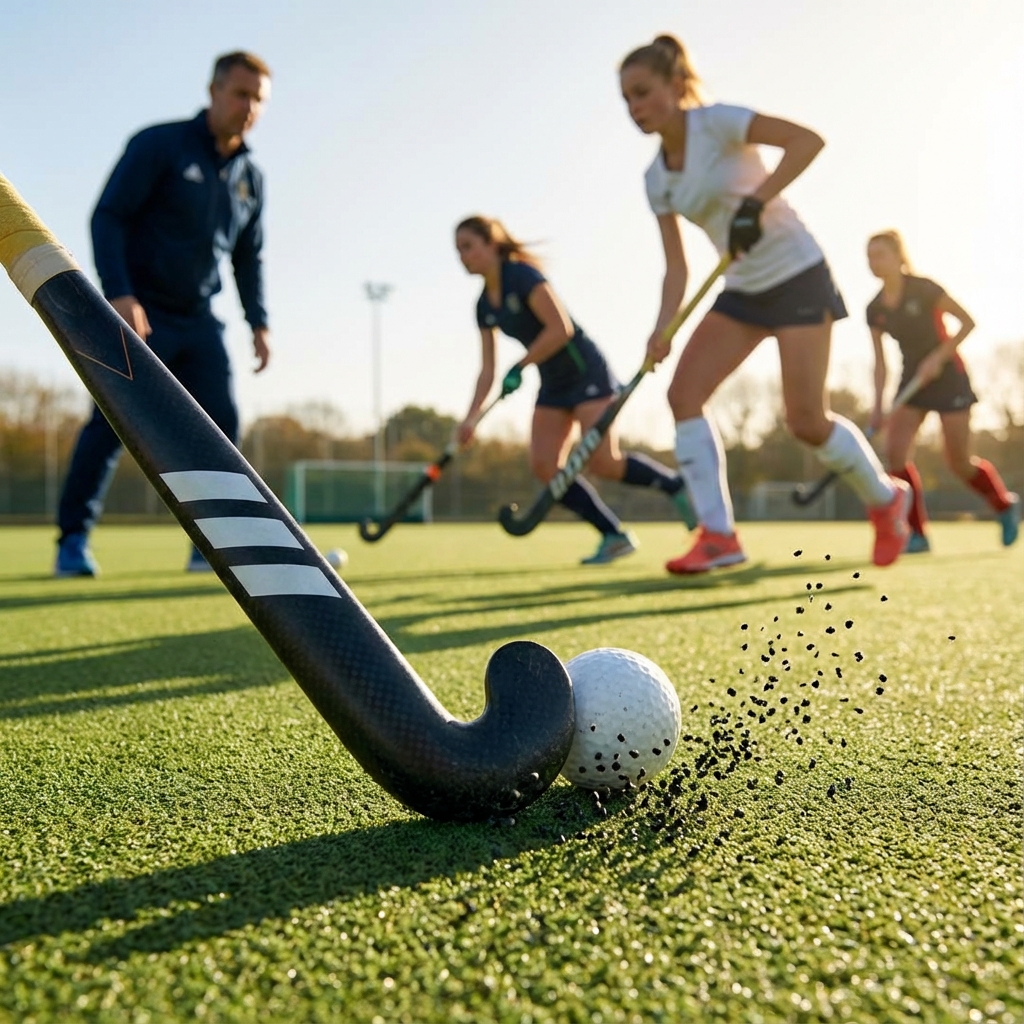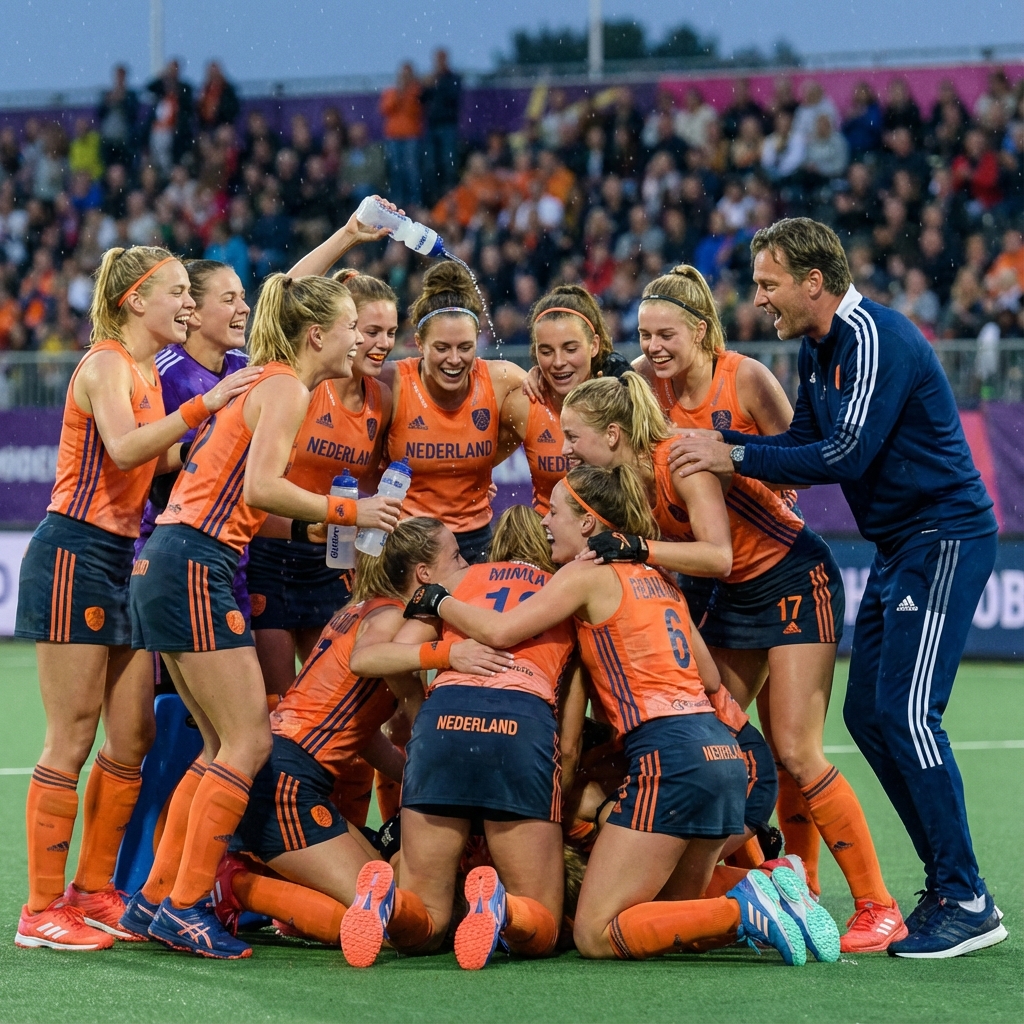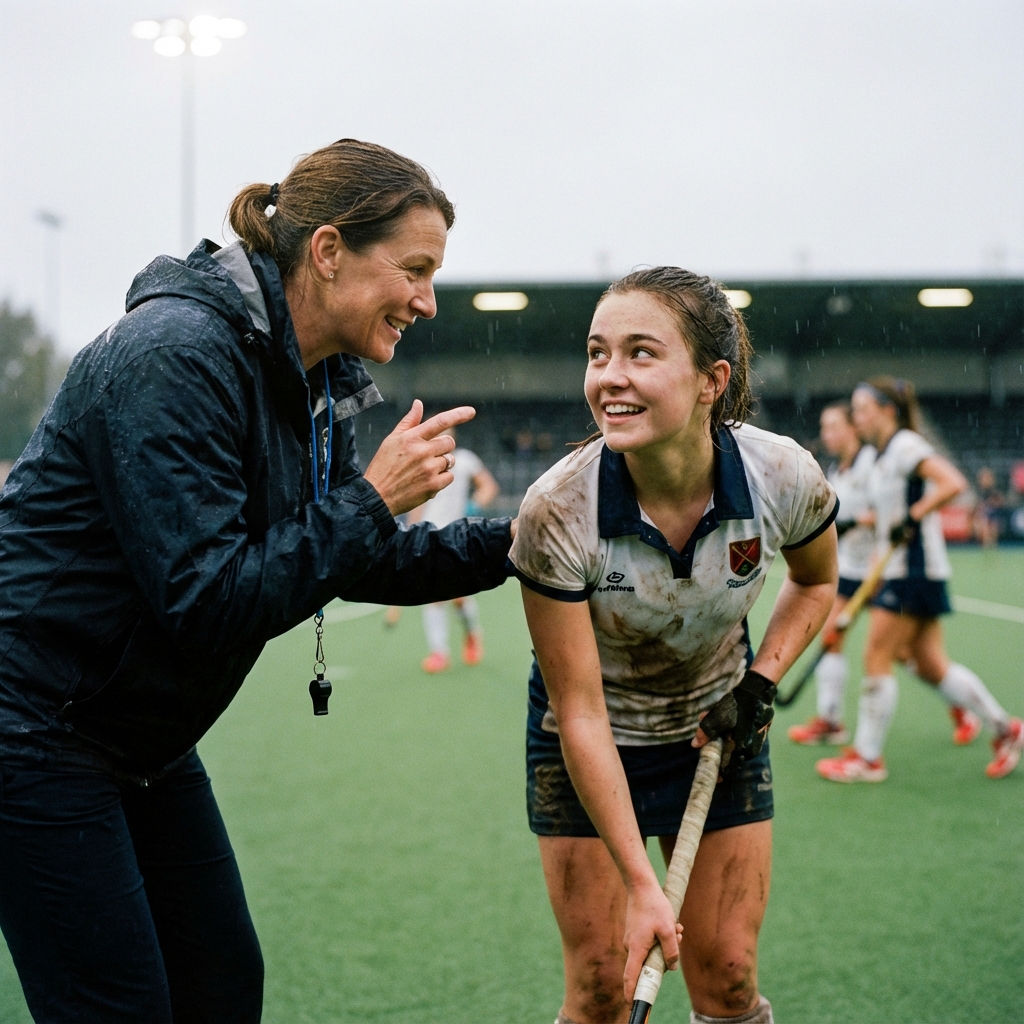As players haven't done passing yet they should roll the ball to their partner. This first part of the drill is about rolling the ball to a stationary player to allow them to trap it on their reverse stick. Each player should trap 5-10 balls before swapping over with their partner. This should only take around 2 minutes. The reverse stick stop is hard then the forehand stick stop as it is on the players weak side. In a game this shouldn't be used as the first option, instead players should move their feet to get around on their forehand.
Reverse specific:
- Get the stick down early, keeping it low to the ground with a nice firm but relaxed grip. Bend from the knees, not just the waist. The left hand should be near the top of the stick and the right hand further down. Bend the knees and absorb the ball against the stick out in front of the right foot. It should feel like you are allowing your stick to "give" a little on contact. Keeping hands relaxed at the point of contact will help which is sometimes called "soft" hands. The players body should be in line with the ball as it approaches them. Players may need to angle their stick down to help control the ball. Like with the left-to-right drag you do not want your arms crossing, which means you have to rotate your body so you drop your left foot back and your left hand is down by your right foot- this should allow the right hand to come across the body and still be straight (right hand should be in front). If unsure get the players to place their sticks in front of them draw a massive semi-circle from right-to-left with their left hand staying in place (should be like the arm on a clock) and the player hands should then be in the correct position without crossing the arms. It is even more important on the reverse side when it is much harder to control the ball to get low. The best way to receive the ball is with a flat, two-handed reverse stop. Some players will do it with just their left hand (this is weaker). If the players are not horizontal enough, the ball can bounce up off their stick or race beneath it. Some players are so low their knuckles touch the astro and this is okay to happen.
1.) The quicker ball will mean the players have to use softer hands to cushion the ball in and stop it rebounding off their stick. Additionally, it will mean that players have to set earlier to receive the ball. Player should start to show the feeders where they want the ball placed. Moreover, on the reverse they will need to change the angle they are trapping the ball with on their stick- if its not downwards enough it will bounce or go under.
2.) In order for the player to be able to move the ball with their first touch they should move their feet in the diction they want to go. After they cushioned the ball they should quickly move their hands, but most importantly elbow to point in the direction in which they want to move the ball. On the reverse it is more likely you will have to cushion then step and push the ball in the direction you want it to go. Most players will drag the ball across their bodies to go on the forehand as this is stronger and you can pass the ball easier with it.

From mandatory safety equipment to evolving tactical systems and player-centred coaching methods, field hockey is transforming. Here's what every coach needs to know for 2026.

The Netherlands made history at Paris 2024 with the first-ever golden sweep. Here's what coaches at every level can learn from their dominance.

The best coaches build more than skills - they build connections. Learn how trust-based relationships transform team performance.